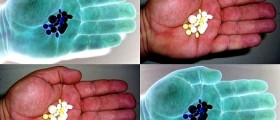
What are the effects of morphine?
Morphine is a strong narcotic that affects the central nervous system. It relieves the pain but also leads to impairment of mental and physical functions and alters the state of mind. It is documented that morphine relieves fear and anxiety, producing the feeling of euphoria. This drug also decreases the sense of hunger, reduces the sex drive, affects the menstrual cycle and produces constipation. Morphine is a highly addictive substance and need for higher and higher doses usually develop very quickly. Abuse of morphine generally entails taking more than prescribed or outside of medical supervision. Abusers sometimes mix morphine with alcohol, cocaine or turn the tablets into the powder which is suitable for snorting or injection.
Addiction to morphine
Addiction to morphine develops at the similar rate to those to a heroine. These two substances are particularly susceptible to abuse. The addiction develops as the addictive drug activates the brain’s reward systems. Therefore, the brain has a strong promise of reward, which causes cravings for the drug and forces a subject to find a way how to satisfy this need. Additive drugs actually chemically alter the brain reward mechanisms and result in strong addiction.
Moreover, the person’s level of consciousness is reduced, and they are typically less aware of their present surroundings. Once when the addiction develops, a person will experience withdrawal symptoms if he or she doesn’t take morphine. These symptoms usually include nausea, tearing, chills, yawning and general malaise.
Overdose can have severe and possibly fatal consequences and usually manifests in cold clammy skin, low blood pressure, pinpoint pupils, sleepiness, stupor, slow pulse rate and slow berating, accumulation of fluid in the lungs, and even coma.

















Your thoughts on this
Loading...